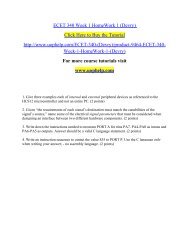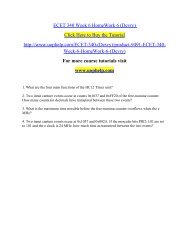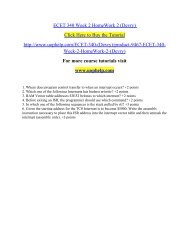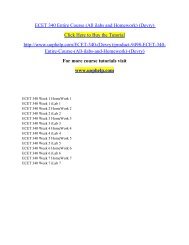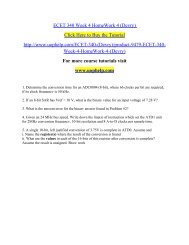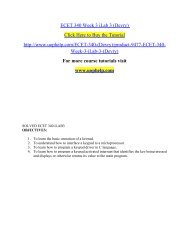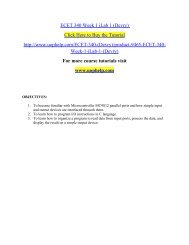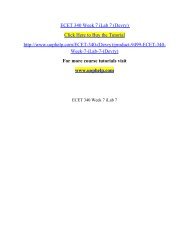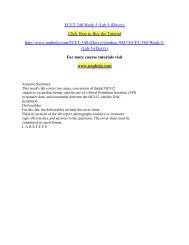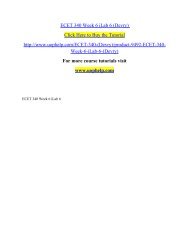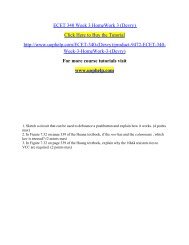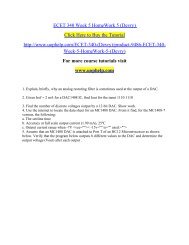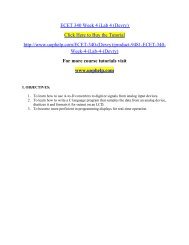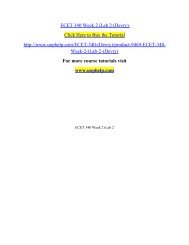ECET 340 Week 7 HomeWork 7.pdf
For more course tutorials visit www.uophelp.com 1. The movable part of the solenoid is the: +2 points 2. Why is the 6N139 optoisolator used in the interfaces to devices such as large motors? +2 points 3. Calculate the number of steps per revolution for a stepper motor with a step angle of 7.5°. +2 points 4. How is stepper motor speed controlled? State any two ways a program can do this. +2 points 5. For this problem, you should look at Figure 5A on the next page as a physical example of a stepper motor. It is an example of a stepper motor with four (4) magnetic windings which are connected via an interface circuit to the HCS12 Port T pins 4, 5, 6, & 7, with an armature (rotor) that has 12 poles (combined number of North and South magnetic poles). Notice how each step rotates the rotor 30 degrees, and notice the logic states on the Port T pins going from Step 1 to Step 2. To rotate the rotor 90 degrees, you would need three (3) steps (see figure 5A for explanation).
For more course tutorials visit
www.uophelp.com
1. The movable part of the solenoid is the: +2 points
2. Why is the 6N139 optoisolator used in the interfaces to devices such as large motors? +2 points
3. Calculate the number of steps per revolution for a stepper motor with a step angle of 7.5°. +2 points
4. How is stepper motor speed controlled? State any two ways a program can do this. +2 points
5. For this problem, you should look at Figure 5A on the next page as a physical example of a stepper motor. It is an example of a stepper motor with four (4) magnetic windings which are connected via an interface circuit to the HCS12 Port T pins 4, 5, 6, & 7, with an armature (rotor) that has 12 poles (combined number of North and South magnetic poles). Notice how each step rotates the rotor 30 degrees, and notice the logic states on the Port T pins going from Step 1 to Step 2. To rotate the rotor 90 degrees, you would need three (3) steps (see figure 5A for explanation).
- No tags were found...
Create successful ePaper yourself
Turn your PDF publications into a flip-book with our unique Google optimized e-Paper software.



